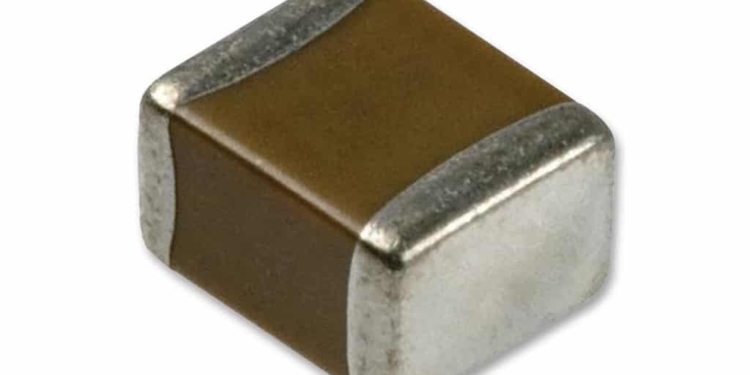Source: Electronic Products article
By Richard Quinnell, Editor, Technical Special Projects.
Capacitor manufacturers are aware of the challenges that supply shortages bring and can help designers with alternative options — selecting different values, evaluating other technologies, and redesigns.
A confluence of rising demand and capacity limitations is creating shortages in interconnect, passive, and electromechanical (IP&E) component supplies. And the situation is likely to persist for perhaps years because vendors have delayed investing in additional manufacturing capacity, fearing a repeat of the dot-com boom/bust cycle. While many might consider supply shortages a manufacturing or procurement problem, though, designers are in an ideal position to help find a long-term solution.
The current IP&E shortage is a cause for serious concern. Demand has so outstripped production that common components such as multilayer ceramic chip capacitors (MLCCs), chip resistors, and the like are now seeing lead times of 40 to 60 weeks. That’s enough to exhaust any reasonable inventory reserve that a manufacturer might have and result in a shutdown of a production line and corresponding loss of revenue and even market share. These shortages, then, become a company-wide concern, not just a manufacturing or procurement worry.
A typical bill of materials (BOM) and component specification control drawings for a design may identify drop-in alternatives for such components, but in current market conditions, that may not be enough to help purchasing acquire the needed parts. Other companies have similar choices, after all, so the competition for alternatives may be nearly as great as for the preferred parts.
What manufacturing needs are alternatives to using unavailable parts that are not simple cookie-cutter replacements but, instead, use different component types or values. Identifying and validating such alternatives are best done by the design team.
Consider, for instance, trying to find substitutes for the MLCCs that have become popular because of their small size, low cost, and low equivalent series resistance (ESR). Such devices have lead times approaching a year, and the shortages are not expected to begin easing before 2020, so identifying an alternative is essential.
If a slight board redesign is a viable option, and the capacitance is not critical (such as a bypass application), it might be possible to simply use a greater capacitance in a larger, less popular, and, thus, more available package size. Another alternative might be to use two lower-value capacitors in parallel to achieve the desired capacitance.
But in many cases, altering the printed circuit board (PCB) to make room for a larger footprint alternative may not be possible. In such cases, another alternative might be to use a different capacitor technology type to replace the MLCC, such as tantalum or aluminum polymer. In these situations, developers will need to dig deeper and explore parameters like voltage rating, ESR, resonance frequency, and leakage current in addition to size and capacitance when choosing an alternative.

Fig. 1: Capacitor technologies have different responses to factors such as bias voltage, one of several factors that needs to be accounted for when choosing an alternative. (Image: Murata)
There may be some pleasant surprises in store. Tantalum or aluminum polymer capacitors can achieve a greater capacitance in a given size and volume than MLCCs, so it may well be that a single polymer capacitor can replace two MLCC devices being used in parallel. This substitution can thus yield a reduction in parts count and a possible increase in reliability.
But making such evaluations requires a depth of understanding about capacitor types that many engineers lack. Fortunately, there is help available. The manufacturers of chip capacitors and resistors or other IP&E components are acutely aware of the challenges that supply shortages can raise for their customers.
So they have begun providing help. In the MLCC market, for instance, Panasonic has created a guide, “How to Survive the MLCC Shortage,” comparing and contrasting the attributes of MLCC devices against their solid polymer aluminum families. Similarly, Kemet has produced a whitepaper — “MLCC Shortage: When You Can’t Find the Cap You Need.”
Trade organizations are also offering advice. The European Passive Component Institute (EPCI) has a fairly detailed “first aid” guideline for switching between tantalum and MLCC capacitor types.
Another source of information on possible substitutes for short-supply components is electronics distributors. Most major distributors have engineering staff on hand to help customers address many types of design challenges, including identifying substitutes for parts in short supply.
The best time for identifying and validating alternatives to parts in short supply is before the production inventory runs out, and the earlier, the better. This timing requires that there be cooperation and communication between procurement and design, going well beyond the typical “over-the-transom” approach of simply sending the BOM to parts buyers when a design is complete.
Being prepared to weather a parts shortage before it happens can help ensure that production is able to continue with minimal or no interruption. It also means that there is time to thoroughly engineer a solution to the problem rather than make decisions in a rush to prevent, or at least minimize, a manufacturing shutdown.

































